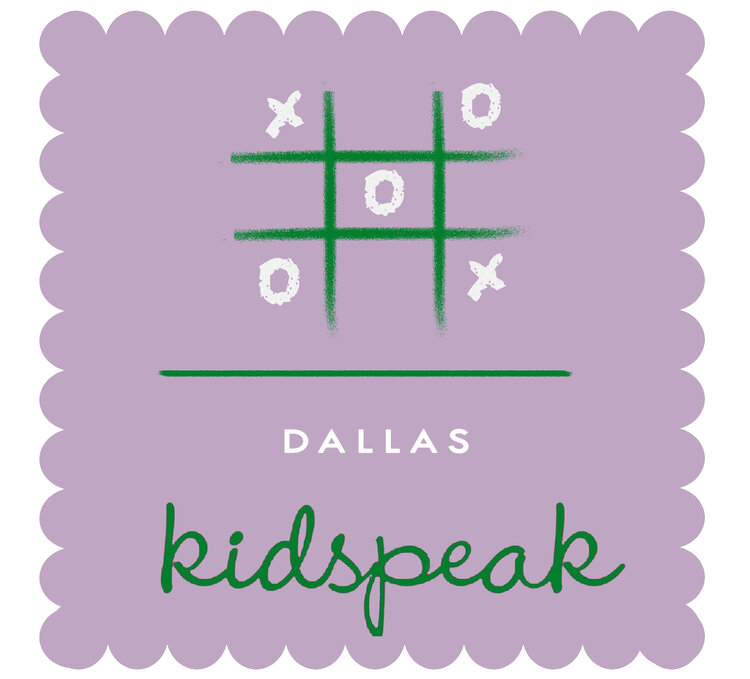At KidSpeak, LLC we offer a variety of different social groups so that all our children can have a good social group focusing on each of their individual social goals. We spend a lot of time first pairing all the children in the most appropriate group and with their best peer matches. When creating social groups you want to focus on pairing children on a few things: 1) what skills do they have in common, 2) what skills can they help teach the other children, 3) what skills can they learn from their peers, 4) do their personalities match, and 5) and much more.
Once we have the kids in the group then we focus on planning each group while focusing on each child’s specific needs. A few years ago we had two different groups of children at very different levels. One group was working on understanding and using “humor” appropriately. While the other group was working on understanding and applying the reciprocity of conversation (i.e.: the back and forth of conversation). This is when we implemented “Joke of the Day”/”Joke of the Week” depending on the kids. And we are so glad that we did – because not only has this been a hit in our therapy session but also at our clients homes and schools.
Here is a step by step on how to introduce and use Jokes:
Prep-Work
1) Create a “Joke Time” for your group, your child, etc. This will be the time that you introduce a new joke and/or review your old ones. At school/therapy creating a “Joke Time” in your circle time or at snack time is a great idea. At home creating a “Joke Time” at breakfast, lunch, morning calendar time, would be great.
2) Decide if you want to introduce a new joke each day or each week. We typically start by introducing a new joke each week – and then once they have this routine down we increase the number.
3) Joke Bag/Box/Bowl: Decide where you want to keep your jokes. At our office we have a “Joke Bag” or “Joke Box” in each of our therapy rooms. At home our families do the same or they use a “Joke Bowl”.
4) Decide which joke script you want to start with. We typically start with “Knock Knock Jokes” and then move to “What”, “What do you call”, “Why” and more.
5) Create your jokes. We use the Boardmaker® Software to create our jokes. We like to make sure that each role is in a different color such as: the Joke Teller is in 1 color and the Joke Responder is in another color. This helps them understand the reciprocity of jokes. At our office we like to try to create jokes that are centered on our weekly themes – just another natural way to build on our vocabulary.
Once our children have all the joke scripts and can read – we then move to written jokes. We love http://www.activityvillage.co.uk/ -- they have a lot of wonderful themed jokes that are easily printable and used.
Time to work on Jokes:
1) Now it’s time to start. During your “Joke Time” you will want to first model 2 people telling the joke and using the visual correctly (i.e.: pointing to their lines when they are talking). If you don’t have 2 adults available – we love to use video modeling. We will play a quick video of 2 therapists telling the joke while using the visual. This is very important for our kids that are unsure of the different roles.
2) Next we take turns with each child and the adult. To help them understand the roles we will say it’s “Manda and Stephanie’s turn. Manda is blue and Stephanie is green.” And then we will practice the joke together. At the end of each joke if the kids are not laughing then we like to laugh and say “That joke is so Funny!” After each child has taken a turn with the adult, then we work on them telling each other the jokes.
3) Each week/day we work on telling jokes. Once we feel that each child understands the script of that joke we work on making up our own jokes as well as we then move on to a harder joke script.
Each child/group at our office LOVES joke time! But they each learn differently. We typically start joke telling between 3 ½ - 5 years and then work on it through our school aged kids. Some children pick up the jokes very quickly and others need more time.
Adding in Jokes to your weekly routine will help your child work on many different speech and language skills: increasing vocabulary, understanding and applying the social reciprocity of conversation, understanding and applying humor, speech/articulation skills, and more.
Our “Joke of the Day” is now part of our group and individual sessions for our kids that have language delays, language disorders, social communication disorder, difficulties with pragmatics, Autism, and Apraxia. All of our kids LOVE “Joke Time” and are very successful with generalizing the skills that they learn in his simple activity to other environments and skills.
If you need to find a quick and easy way to find jokes....check out our Joke Package on our on-line store at https://www.kidspeakdallas.com/store/jokes
We hope that you and your students LOVE joke time as much as we do at our office!
~KidSpeak, LLC
www.kidspeakdallas.com
The Picture Communication Symbols
©1981-2018 DynaVox Mayer-Johnson
are used under contractual agreement
and were created by KidSpeak, LLC.
All rights reserved worldwide.



